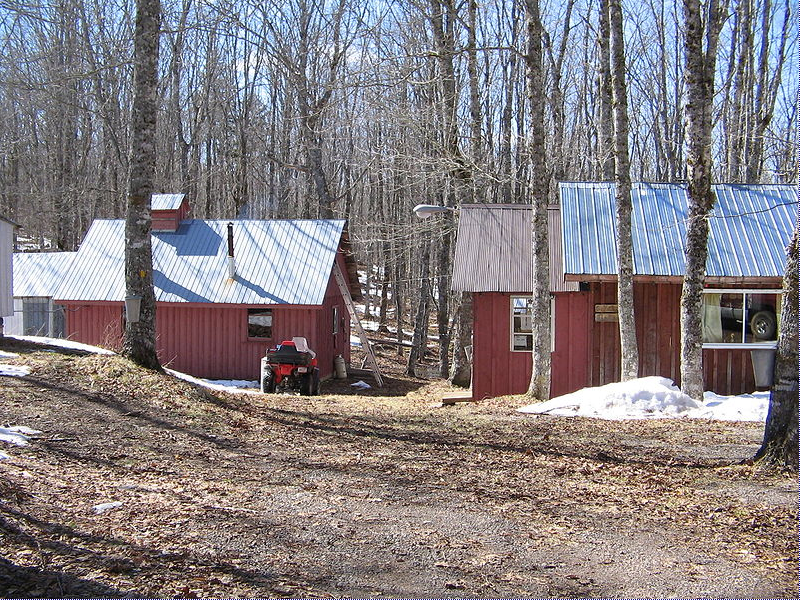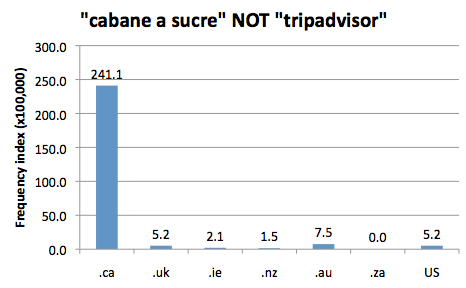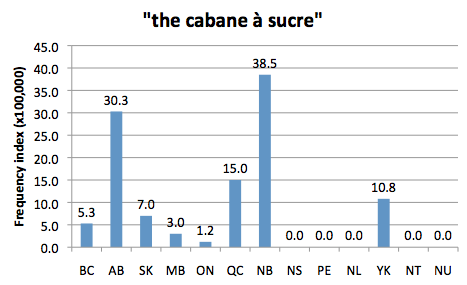DCHP-2
cabane à sucre Cabane A Sucre, < Canadian French DCHP-2 (October 2016)
n. — Food, especially New Brunswick, Quebec, Alberta
a cabin where maple sap is boiled into syrup and, today, usually served to tourists (see Image 1).
Type: 1. Origin — A loanword from Canadian French that has entered Canadian English in the (late) 20th century. It is the French equivalent to sugar shack, which is somewhat older than this term. In early Canada, such shacks were usually called cabanes, sugar shacks, sugaring-huts or sugar-huts. The present term is a more recent variant (see the quotations) that seems to be increasing in importance, perhaps in line with positive connotations, e.g. of 'sophistication', 'Europeanness' or the like, over its English synonyms. It is found now in various locations, such as on the Prairies. Chart 1 shows that the term is overwhelmingly found in Canada. Chart 2 shows New Brunswick & Quebec in the East and Alberta in the West as two strong holds, followed by the Yukon Territory.
COD-2 labels the term as "Cdn (Que)".See also: cabane sugar-hut sugaring-hut sugar shack
- The spelling with the accent, "à", or without it, "a", has a regional dimension in Canada. In Nova Scotia, spellings without the accent, cabane a sucre dominate (see the caption in Image 1), as they do in the Northwest Territories.
References:
Images:

Image 1: Cabane à sucre, Nova Scotia. Source: Wikimedia Commons. Photo: Oven Fresh
Chart 1: Internet Domain Search, 30 Oct. 2013
Chart 2: Regional Domain Search, 12 Jul. 2016